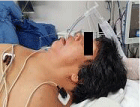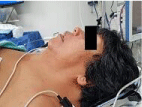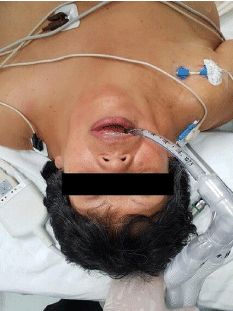
Case Presentation
Austin J Anesthesia and Analgesia. 2018; 6(3): 1075.
Successful Management of Difficult Airway in an Adult Patient of Turner Syndrome
Cortés-Lares JA*, García Dalila LD, Rivas- Jaramillo AM and Osorio-Damián JN
Research Unit in Clinical Epidemiology, Specialties Hospital of the Western National Medical Center, Mexican Institute of Social Security, Jalisco, México
*Corresponding author: Cortés-Lares JA, Research Unit in Clinical Epidemiology, Specialties Hospital of the Western National Medical Center, Mexican Institute of Social Security, Jalisco, México
Received: November 19, 2018; Accepted: December 11, 2018; Published: December 18, 2018
Abstract
The inability to successfully manage a difficult airway is responsible for 600 annual deaths, 30% of which are attributable to anesthesia [1]. According to Gil, et al., 18% of patients are difficult to intubate, 5% are difficult to oxygenate and between 0.004 and 0.008% cannot be intubated or oxygenated [2].
Treating patients with genetic abnormalities is a challenge. Turner syndrome is a disease that has a prevalence of 2000 to 2500 alive, female children [3]. It is a result of partial or complete X chromosome monosomy [4]. It is not odd these patients need surgery for other causes from their genetic pathology. The present case emphasizes on the increasing difficulty of airway management on patients with Turner syndrome and the use of videolaringoscope and tube introducer [5].
Case Presentation
A 52-years-old woman with Turner syndrome presented multiple neck and facial deformities was scheduled for laparoscopic cholecystectomy. Weight: 87kg, Height: 1.52cm BMI: 37.8 With vital signs BP: 135/84 mmHg, HR: 94 x’, SpO2 93%, RF: 18 x’ (Figures 1-4).

Figure 1: Turner Syndrome Post eyes 01.

Figure 2: Turner Syndrome Pre eyes 01.

Figure 3: Turner Syndrome Post eyes 02.

Figure 4: Turner Syndrome Pre eyes 02.
Labs with alteration
Induction of anesthesia was achieved with midazolam 2mg, fentanyl 250mcg, rocuronium 40mg, propofol 100mg. Videolaringoscopy was performed with Vividtrac equipment using eschmann traqueal tube introducer. Successfully intubated in the first attempt with cuffed endotracheal tube number 7.0mm (internal diameter). Anesthesia was maintained with sevorane 2-2.5% and oxygen (40%) along with fentanyl infusion. The intraoperative course was uneventful. At the end of surgical procedure, which lasted for 1h 20min, patient’s trachea was successfully extubated.
Video link: https://youtu.be/8_GQzcGcNw4
References
- Gómez-Ríos MA, Gaitini L, Matter I, et al. Guidelines and algorithms for managing the difficult airway. Rev Esp Anestesiol Reanim. 2018; 65: 41-48.
- Gil KSL, Diemunsch PA, Hagberg CA. Fiberoptic and flexible endoscopicaided techniques. Benumof and Hagberg’s Airway Management. Chapter 13. 3rd ed. Philadelphia: W.B. Saunders. 2013: 365-411.
- Roopa Kanakatti Shankar, Philippe F. Backeljauw. Current best practice in the management of Turner syndrome. Ther Adv Endocrinol Metab. 2018; 9: 33-40.
- Mashour GA, Sunder N, Acquadro MA. Anesthetic management of Turner syndrome: A systematic approach. J Clin Anesth. 2005; 17: 128-130.
- El-Orbany MI, Salem MR, Joseph NJ. The Eschmann tracheal tube introducer is not gum, elastic, or a bougie. Anesthesiology. 2004; 101: 1240.